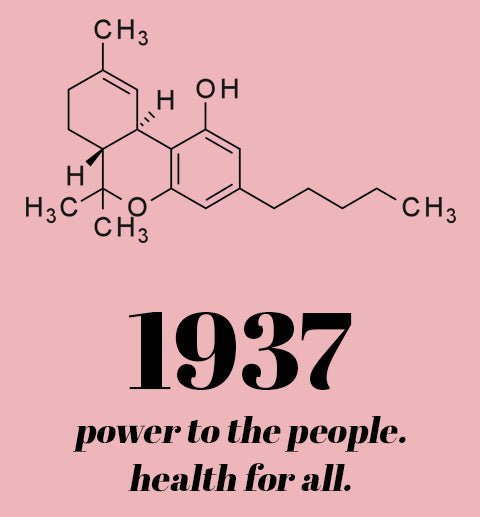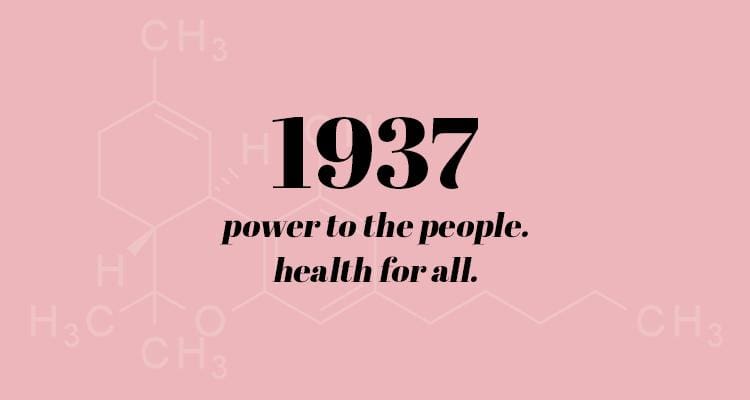CBD in Stroke Recovery

Most everyone has a loved one, colleague, or friend that has been somehow affected by stroke. According to the Centers for Disease Control, someone suffers from a stroke every forty seconds in the United States, with 15 million people affected worldwide each year.
And with a small window for emergency treatment and recovery, the effects following a stroke can be lifelong. Some people recover completely, but more than two-thirds of survivors will require rehabilitation.
I personally have a beloved family member who is currently on the stroke recovery road — a road paved by trial and error, with both moments of victory and feelings of defeat.
As such, I strongly support clinical research on this subject.
What Happens During a Stroke?
Strokes are usually classified into two groups — Hemorrhagic and Ischemic.
According to Stroke.org, “a hemorrhagic stroke is either a brain aneurysm burst or a weakened blood vessel leak. Blood spills into or around the brain and creates swelling and pressure, damaging cells and tissue in the brain.” Hemorrhagic strokes are the less common of the two, with only 15% of all strokes being of this kind. But they are accompanied with more fatal results; 40% of stroke deaths are hemorrhagic.
Ischemic strokes are the most common, accounting for 87% of all strokes. It’s also the focus of CBD-related stroke research, and therefore the focus of this post. Again referencing stroke.org, “ischemic stroke occurs when a blood vessel carrying blood to the brain is blocked by a blood clot. This causes blood not to reach the brain.” The resulting effect is necrosis, or tissue death, in that affected portion of the brain.
In terms of treatment, time is of the essence.
Treatment and Recovery
In both types of strokes, emergency medicine is immediately required.
The Mayo Clinic explains that for ischemic stroke, medications that will break up the blood clot must be administered within four and a half hours after the stroke if they are to be given intravenously, and the sooner the better.
Another option is to treat the stroke with an emergency endovascular procedure, which is performed directly inside the blocked blood vessel. This treatment may be required for clots that can’t be dissolved with medication, and it’s also performed as soon as possible following the stroke.
Long-term treatment and recovery depend on the area of the brain where the stroke occurred and the amount of tissue damaged. If there is brain damage on the left side of the brain, for instance, speech and language disorders may result.
Additional issues due to stroke include trouble with breathing, swallowing, balancing, and vision.
How Can CBD Help? First, Let’s Talk About the Endocannabinoid System
All of us mammals contain a multitude of certain “receptors” within our central nervous system that receive information, or stimuli, that our brains respond to. In fact, we have many systems like this, and they all contain these receptors and work through our bodies to regulate our immune responses, hormones, and more.
You probably remember learning about these different systems in health and science classes in school, or… maybe not.
One such system (that we likely didn’t learn about in school) is termed the endocannabinoid system. This system is made up of neurotransmitters that bind to cannabinoid receptors and is expressed through the central nervous system.
The endocannabinoid system helps regulate a variety of physiological and biological process, including:
- fertility
- pregnancy
- prenatal and postnatal development
- appetite
- pain management
- mood
- memory
- sleep
The endocannabinoid system also mediates the pharmacological effects of cannabis plant consumption, which is where its name and terminology derive from.
Cannabis Sativa
The cannabis plant, also known as cannabis sativa, is the main known biological source of cannabinoids — those little protein-based neurotransmitters that bind to receptors in the central nervous system and regulate the basic processes listed above.
Decades of researching the molecular structure of the cannabis plant have enabled scientists to isolate two important compounds within the plant — Delta9-tetrahydrocannabinol (THC), and cannabidiol (CBD).
“The discovery in the early 1990s of specific membrane receptors of marijuana’s psychoactive component (‐)‐Δ9‐tetrahydrocannabinol (THC) opened the way to the revelation of a whole endogenous signaling system now known as the endocannabinoid system,” states Luciano De Petrocellis and colleagues, in their research published in the British Journal of Pharmacology.
And while THC is a psychoactive compound of cannabis, thus lending itself to other mental health maladies, CBD is not psychoactive. For many people, this difference may be a driving factor in whether or not to pursue CBD as part of recovery and treatment.
Cannabis and the Body
We biologically possess two known cannabinoid receptors, called CB1 and CB2 receptors, which contribute to neuroprotection. The CB1 receptors reside within the central nervous system, and the CB2 receptors can be found in both the central nervous system and within cells of the immune system.
Having these cannabinoid receptors means that functions expressed via the endocannabinoid system — functions that may be affected by stroke — can be strengthened by cannabinoids that are introduced to the body from the cannabis plant.
What the Research Reveals
Thanks to multiple clinical studies conducted over the last twenty years or so, researchers have discovered that the administration of CBD following ischemic stroke proves to be very beneficial to recovery.
For example, data indicates that CBD may activate the 5-HT1A receptor located in the brain’s hippocampus, which leads to the improvement of cognitive and functional impairment after cerebral ischemia, or stroke.
Researchers in the Department of Neuropharmacology at Japan’s Fukuoka University also write that new data now suggest that cannabinoid CB1 receptors directly contribute to neuroprotection through anti-excitotoxicity and other reactions. They conclude, “the mechanism of this biphasic effect of CBD is still unclear, but CBD may induce cerebro-protective effect through modulating the endogenous cannabinoid system.”
In another study, these researchers have also discovered that the anti-inflammatory action of CBD is associated with the inhibition of plasma high-mobility groups leaked from dying cells and released from damaged cells.
Such results suggest that CBD may prevent post-ischemic injury progressively induced by an ischemic stroke.
These are just a few references to the growing number of research groups that have come to discover the same concept — that CBD compounds, derived from cannabis, may aid our central nervous system’s recovery from stroke.

CBD Could Boost Stroke Recovery
CBD used as part of emergency medical intervention and treatment may offer a slight widening of the window for time to respond to ischemic stroke. The team at Fukuoka University note in their work that “CBD was neuroprotective even when administered 6 hours after cerebral ischemia.”
But, similarly to standard best practices when responding to stroke with traditional drugs, the sooner the better when it comes to using CBD as part of ischemic stroke treatment. Early intervention — as in the first few days following the stroke — is ideal.
Fukuoka University researchers add that, “repeated treatment with CBD from one day or three days after cerebral ischemia improved the functional deficits, such as neurological score and motor coordination, and survival rates.”
The complete list of known health benefits resulting from CBD use is quite lengthy, with known therapeutic results in other disorders such as:
- Cancer
- Reproductive, Cardiovascular and Gastrointestinal Disorders
- Multiple Sclerosis
CBD has also been found effective in treating neurological diseases, with its potent antioxidant activity and anti-inflammatory compounds aiding to the neuroprotection of disorders such as:
- Parkinson’s Disease
- Traumatic Brain Injury
- Epilepsy
- Stroke
There is even emerging data that supports CBD treatment for Alzheimer’s and dementia.
Clearly, the compounds found within the cannabis sativa plant are worthy of attention and study.
Moving Forward
With research into the cannabis plant sometimes overshadowed by social stigma, perceived taboo, and general misunderstanding, progress and discovery can be a slow process.
But like all clinical research, more exploration is needed.
Due to the nature of the disease, it’s hard to gauge true efficacy in stroke research. For example, in studies of CBD as a treatment for ischemic stroke in lab rats, the rats are given a stroke by experimental means in order to observe the results of CBD administration thereafter — which is an impossible scenario for humans.
You could argue that the study results may not be true to life, as these experiments would never occur with humans. A fact that I, for one, am definitely alright with. First do no harm, etc.
But with the willingness to explore the use of CBD as part of post-stroke emergency medicine growing among doctors and researchers, it's true to life benefits are quickly becoming apparent.
What We Can Take Away
With research into CBD still being brand new, coupled with a social perception that may still be wary of the cannabis sativa plant, it can be difficult to know what to take away from all of the biological jargon and political noise.
But, in terms of benefits of CBD for stroke recovery, here’s what we can conclude:
- Stroke can happen to any person at any age, and any sort of medical intervention is required within the first minutes to days following the stroke
- Our endocannabinoid system was named after the discovery of receptors in our nervous system that interact with the compounds of the cannabis plant
- An observed by current clinical researchers, the relationship between our cannabinoid receptors and the cannabinoids received from the cannabis plant benefits multiple physiological and biological processes
- The use of CBD in stroke recovery may aid the body’s endocannabinoid system in improving physiological and biological processes that have been damaged from stroke
- The use of CBD has been proven effective in pain management, which may provide relief to stroke survivors.
Would you consider using CBD in your own health treatments and regimens?

Kacie Cooper Stotler is a part-time English professor and a full-time writer, bookworm, and bohème. With a Master’s in English and a Bachelor’s in Psychology, she loves analyzing and obsessing over all things pop culture literature, and regularly does so at her independent publication, Fox Burrow Magazine. Kacie is drawn to simple living and minimalism, which she writes about in her blog, Life Rustic, from the Rocky Mountain home she shares with her husband and four-legged companions. Kacie has a growing aversion to social media, but can still be tentatively found on Instagram.



